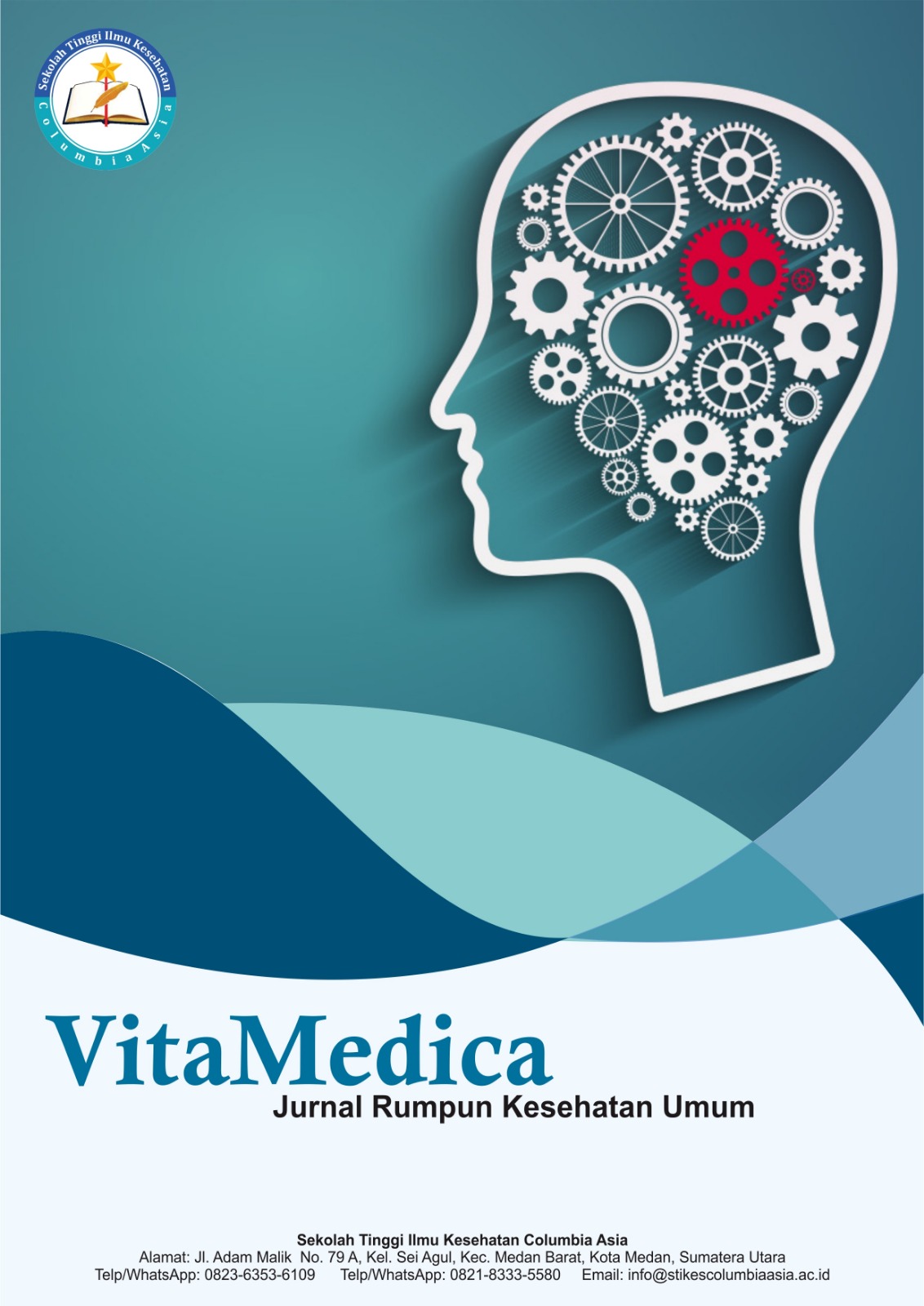Glomerulonefritis Akut
DOI:
https://doi.org/10.62027/vitamedica.v3i3.384Keywords:
Children, Glomerulonephritis, Hematuria, Hypertension, Post-StreptococcalAbstract
Acute glomerulonephritis (AGN) is a sudden inflammation of the glomeruli in the kidneys, commonly triggered by an immunologic reaction to bacterial or viral infections, especially group A beta-hemolytic Streptococcus. AGN is most frequently found in children aged 2–10 years, with a higher prevalence in males. One of the most typical forms is post-streptococcal glomerulonephritis (PSGN), which appears approximately 1–2 weeks after a pharyngeal or skin infection. The pathogenesis of PSGN involves immune complex formation and complement activation, leading to glomerular injury characterized by hematuria, proteinuria, edema, and hypertension. Diagnosis is based on clinical symptoms, laboratory findings such as elevated ASO titers and decreased C3 levels, and occasionally renal biopsy. Management of PSGN is primarily supportive, including fluid restriction, diuretics, and antihypertensive therapy. In severe cases, corticosteroids, dialysis, or antibiotics may be necessary. The prognosis is generally favorable with proper treatment, although complications such as hypertensive encephalopathy and acute kidney injury may occur. Therefore, early detection and adequate management are crucial to prevent disease progression.
References
Erwin, M., Fadly, R., & Siregar, A. (2016). Pengelolaan hipertensi pada glomerulonefritis akut pasca-streptokokus. Jurnal Nefrologi, 25(3), 157-164.
Gelder, M., Mayou, R., & Geddes, J. (2012). Psychiatry. Oxford: Oxford University Press.
Hanafi, M. (2018). Tatalaksana dan komplikasi glomerulonefritis akut pasca-streptokokus pada anak-anak. Jurnal Pediatri Indonesia, 48(1), 32-39.
Jongsma, H. E., Gayer-Anderson, C., Lasalvia, A., et al. (2018). Incidence of schizophrenia and other psychoses in Europe: The EU-GEI study. JAMA Psychiatry, 75(1), 36–46.
Jung K, Zeng X, Bilusic M. (2016). Nivolumab-associated acute glomerulonephritis: a case report and literature review. BMC Nephrol. Nov 22;17(1):1–6.
Leucht, S., Cipriani, A., Spineli, L., Mavridis, D., Orey, D., Richter, F., et al. (2013). Comparative efficacy and tolerability of 15 antipsychotic drugs in schizophrenia. The Lancet, 382(9896), 951–962.
Lydia A. (2023). Merawat Kesehatan Ginjal Generasi Muda Indonesia: Peran Deteksi Dini Glomerulonefritis.
Maric, N. P., Andric Petrovic, S., & Svrakic, D. M. (2018). Acute and transient psychotic disorders: Diagnostic stability and association with schizophrenia. Psychiatria Danubina, 30(Suppl 4), 402–407.
Pardede SO, Suryani DK. (2016). Diagnosis dan Tata Laksana Glomerulonefritis Streptokokus Akut pada Anak. Majalah Kedokteran UKI. 2016.
Sadock, B. J., Sadock, V. A., & Ruiz, P. (2015). Kaplan and Sadock’s Synopsis of Psychiatry (11th ed.). Philadelphia: Wolters Kluwer.
Sulastri, S. (2015). Glomerulonefritis akut pasca-streptokokus pada anak-anak: Diagnosis dan terapi. Jurnal Kedokteran Anak, 37(2), 54-59.
Tsuang, M. T., Faraone, S. V., & Glatt, S. J. (2011). Psychiatric Genetics. Oxford University Press.
Uthup S, Kumar Reddy S, Khandelwal P. (2022). Standard Treatment Guidelines 2022 Acute Glomerulonephritis (Acute Nephritic Syndrome). Indian Academy of Pediatrics.
Welch TR. (2012). An Approach to the Child with Acute Glomerulonephritis. Int J Pediatr. 2012:1–3.
World Health Organization. (1992). The ICD-10 Classification of Mental and Behavioural Disorders: Clinical Descriptions and Diagnostic Guidelines. Geneva: WHO.
World Health Organization. (2016). ICD-10 Version: 2016. Retrieved from: https://icd.who.int
Downloads
Published
How to Cite
Issue
Section
License
Copyright (c) 2025 VitaMedica : Jurnal Rumpun Kesehatan Umum

This work is licensed under a Creative Commons Attribution-ShareAlike 4.0 International License.







